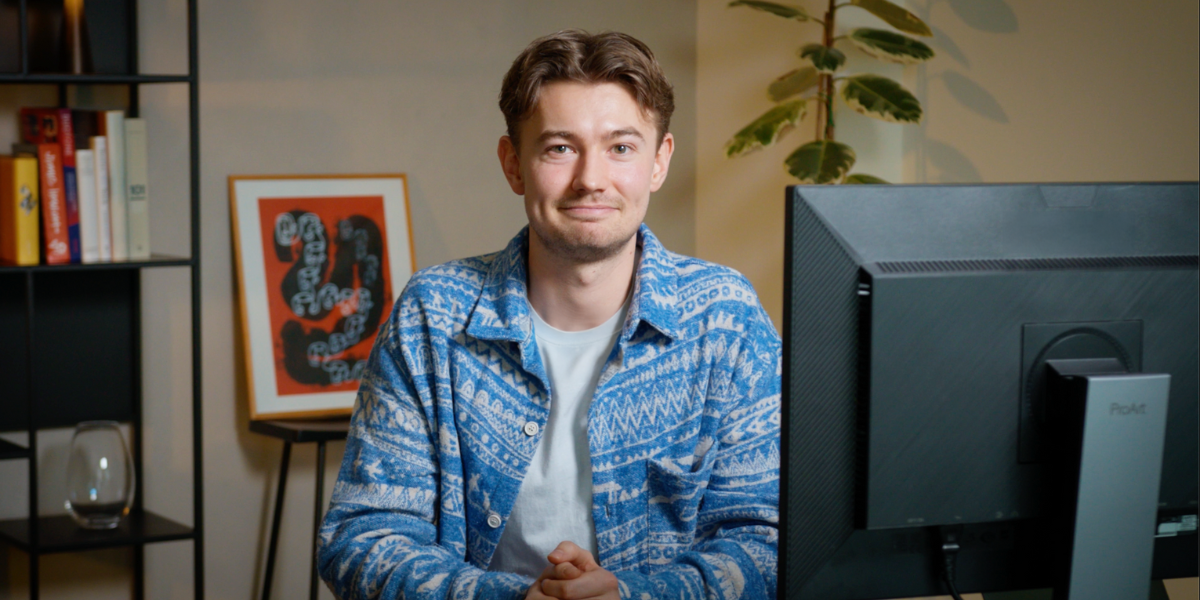La publicación invitada de hoy es de Matt Grant. Matt es un escritor y editor residente en Brooklyn. Su trabajo ha aparecido en Literary Hub , Book Riot, HuffPost y BookBrowse. Encuentra a Matt en línea o síguelo en Twitter y Facebook .
No sé tú, pero a mí me parece que la creatividad y la inspiración son dos de las cosas más difíciles de encontrar como escritor. Las ideas fugaces para historias son geniales cuando surgen, pero ¿qué pasa con todas esas veces que necesitas crear intencionalmente una idea para una historia o un artículo?
Como humanos, todos somos criaturas de hábitos. Pero nuestros hábitos siempre nos ayudan o nos perjudican. La buena noticia para los escritores es que podemos aprovechar nuestra tendencia a lo habitual para facilitarnos el proceso de escritura. Los buenos hábitos de escritura, si se utilizan correctamente, pueden ayudarnos a establecer un ritmo regular que fomente la inspiración y nos mantenga concentrados durante nuestro tiempo de escritura.
A continuación se presentan algunos de los mejores hábitos que puedes comenzar hoy mismo que impulsarán tu creatividad y garantizarán que tu tiempo de escritura sea fructífero y gratificante.
Antes del proceso
Páginas de práctica matutinas
Las páginas matutinas se introdujeron por primera vez en El camino del artista: Un camino espiritual hacia una mayor creatividad , de Julia Cameron . La idea es simple: a primera hora de la mañana, escribe tres páginas completas en un diario o cuaderno, a mano, como un monólogo interior. No se supone que sea una escritura excelente, ni que te autoedites.
El objetivo principal de practicar las páginas matutinas es despejar tu mente de pensamientos, tareas y estados de ánimo que te distraigan y que puedan obstaculizar tu creatividad ese día. Cuando llegue el momento de escribir, no estarás pensando en la ropa que tienes que lavar ni en la conversación con un amigo que necesitas tener ese día, porque ya lo has escrito y lo has dejado para más tarde.
Hacer indicaciones para escribir
Recientemente descubrí el enorme beneficio de las consignas para escribir, después de haber sido escéptico con ellas durante muchos años. A menudo, los escritores no creen que necesiten consignas porque prefieren generar sus propias ideas. Pero una consigna adecuada puede abrir nuevas ideas y perspectivas que uno no puede ver por sí solo. Hay diversas maneras de encontrar consignas para escribir. Muchas son gratuitas en línea , puedes comprar un libro o crearlas tú mismo. Anótalas para usarlas más adelante.
Prueba a escribir sprints
A menudo, el reto para los escritores es terminar un texto sin preocuparse de que sea perfecto. Ahí es donde entran en juego los sprints. Los sprints son breves periodos de escritura , de unos 15 minutos cada uno. Son como hacer repeticiones en el gimnasio. Haces un sprint, luego descansas y haces otra cosa, luego haces otro sprint, luego descansas de nuevo, y así sucesivamente, durante el tiempo que quieras. Al igual que con las páginas matutinas, no deberías dejar de escribir ni intentar editar tu trabajo durante el sprint. Simplemente elige un tema y escribe durante quince minutos seguidos. Al terminar, tendrás una idea terminada o un relato breve que podrás editar y convertir en algo más significativo. ¡Echa un vistazo a este programa gratuito de sprints del equipo de Freewrite para ayudarte!
Leer vorazmente
Ya sé, ya sé, probablemente debería haber puesto esto primero. A veces cuesta ver cómo la lectura afecta directamente a tu creatividad, sobre todo cuando estás ansioso por terminar un proyecto y prefieres escribir. Pero el dicho "un escritor es ante todo un lector" es totalmente cierto, así que lee todo lo que tengas a mano, en cuanto puedas. Lee diferentes géneros en diferentes formatos: novelas, artículos, ensayos, cuentos, poesía y microrrelatos. Nunca sabes cuándo algo que leas te resultará inspirador, y cuanto más absorbas las palabras de los demás, mejor serán las tuyas. Para empezar, prueba este reto de lectura que te obliga a leer de forma diversa.
Durante el proceso
Elige el momento adecuado del día
Una vez que hayas tenido ese destello de inspiración y te estés preparando para empezar a trabajar, es importante implementar los hábitos adecuados para mantenerte enfocado y enfocado. Uno de los primeros pasos es determinar cuándo es probable que logres tu mejor rendimiento. Personalmente, he descubierto que levantarme muy temprano y escribir a primera hora de la mañana me ha liberado del resto del día. Después de llegar a casa del trabajo, no me siento con tanta energía ni tan concentrado.
Claro, no todos somos madrugadores. Para ti, puede que sea por la noche o por la tarde. Elige el momento del día en el que estés más alerta y creativo, y reserva ese tiempo para escribir. Y una vez que lo tengas programado, ¡cíñete a él!
Cambiar la configuración regional
Si te sientes estancado, una de las mejores cosas que puedes hacer es cambiar de aires. A menudo, encontrar una cafetería o una buena biblioteca, rodeado de libros o música relajante, puede ser una gran ayuda para despertar tu creatividad. Si no tienes un lugar cerca donde puedas hacerlo, sal a caminar para despejar la mente y volver al trabajo con una mirada renovada.
Deja de lado las distracciones
Sin embargo, estos lugares solo pueden ser útiles si no te distraes, ¡así que sé implacable con las distracciones! Compra unos auriculares con cancelación de ruido, apaga la conexión inalámbrica de tu computadora, guarda tu celular y no leas tu bandeja de entrada.
Todos sabemos que internet es un agujero negro: en un momento estás buscando algo para tu proyecto y al siguiente, has pasado una hora en Facebook. Reserva otro tiempo para planificar e investigar. Dedica tu tiempo de escritura precisamente a eso: escribir.
Pregunta extra: ¿Realmente necesitas escribir todos los días?
Esta sugerencia suele encabezar la lista de consejos para escribir. Siendo sincero, tiendo a desconfiar de ella. Desconfío de cualquier cosa que se presente como algo imprescindible o un talismán místico. Claro que es buena idea adquirir el hábito de escribir con regularidad. Claro que deberías escribir con frecuencia y durante largos periodos de tiempo.
Pero creo firmemente que, como en todo, escribir debe hacerse con moderación para maximizar su efectividad. Cada vez más investigaciones señalan cómo, paradójicamente, trabajar menos en realidad conduce a una mayor productividad . Las personas que trabajan constantemente están más cansadas, más ansiosas y menos inspiradas; todo lo cual es un golpe mortal para la creatividad. Regularmente me tomo vacaciones de la escritura, donde no hago ningún tipo de trabajo. Al final de estos descansos, siempre vuelvo a mi trabajo con un renovado entusiasmo y motivación.
Así que, por supuesto, escribe tan a menudo como puedas, pero si te saltas un día, date un respiro. En cuanto a inspiración, hay mucho que decir sobre salir al mundo, hacer otras actividades y experimentar cosas que alimenten tus historias. Para un escritor, no hay mayor inspiración que simplemente vivir la vida.
No hay duda de que escribir es un trabajo duro, agotador y agotador. Como con todo, existen hábitos y prácticas que puedes implementar para ser más productivo y distraerte menos. Obviamente, no todo lo de esta lista te funcionará, y puede que haya algo que omití y que sea incluso mejor. Si es así, ¡deja un comentario y cuéntame qué hábitos y prácticas tienes que te ayudan a mantenerte inspirado!
¿Qué hábitos de escritura te encantan? ¿Tienes algún hábito o rutina que te encante y que recomendarías a otros? ¡Cuéntanoslo en los comentarios!
 Matt Grant es un escritor residente en Brooklyn cuyo trabajo ha aparecido en BookRiot, The Huffington Post, BookBrowse y Pop Matters . En su tiempo libre, trabaja en el desarrollo juvenil como director de programas extraescolares en una de las escuelas secundarias más grandes de Manhattan. Puedes encontrarlo en línea en www.mattgrantwriter.com o en Twitter: @mattgrantwriter .
Matt Grant es un escritor residente en Brooklyn cuyo trabajo ha aparecido en BookRiot, The Huffington Post, BookBrowse y Pop Matters . En su tiempo libre, trabaja en el desarrollo juvenil como director de programas extraescolares en una de las escuelas secundarias más grandes de Manhattan. Puedes encontrarlo en línea en www.mattgrantwriter.com o en Twitter: @mattgrantwriter .



























